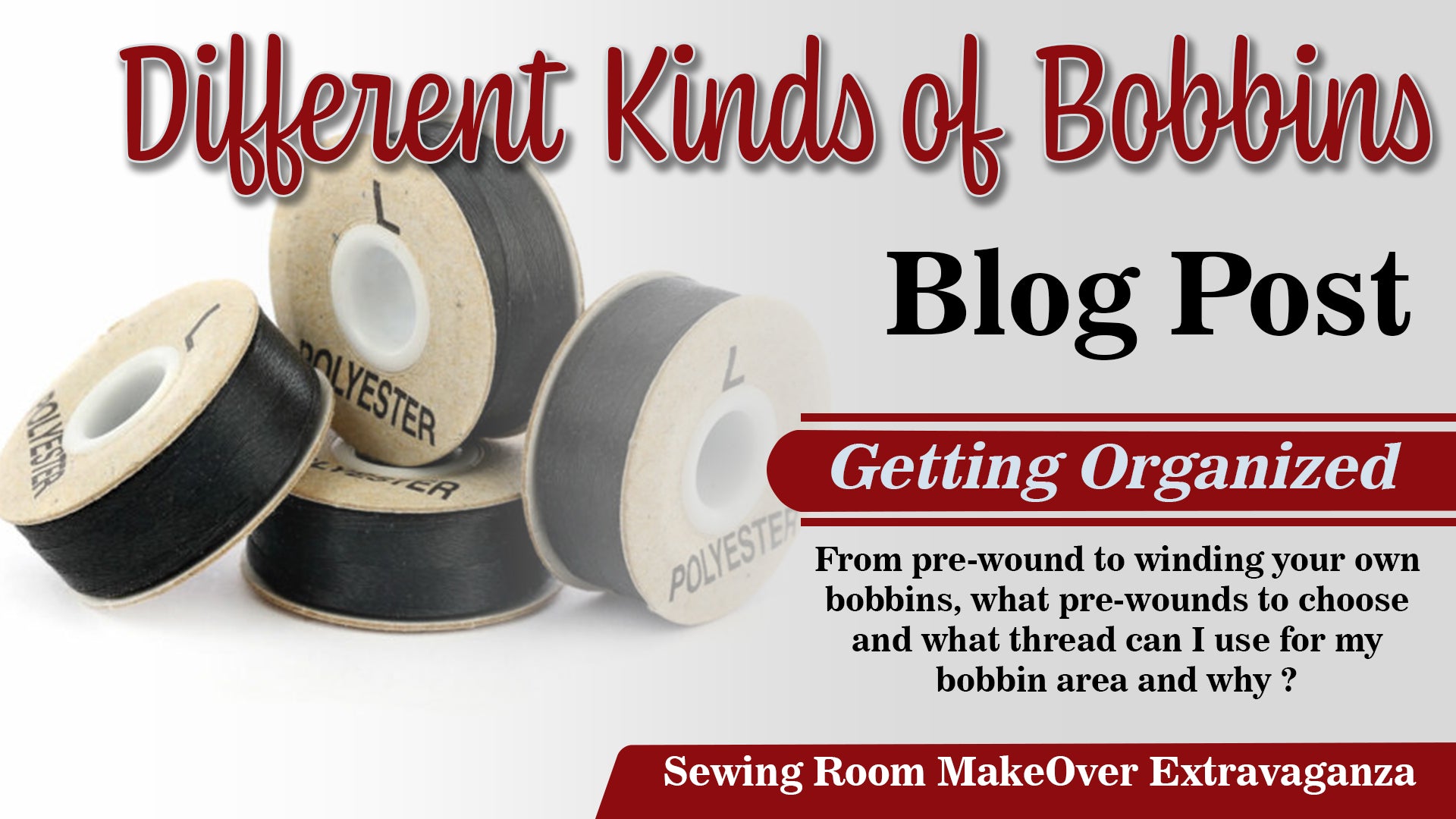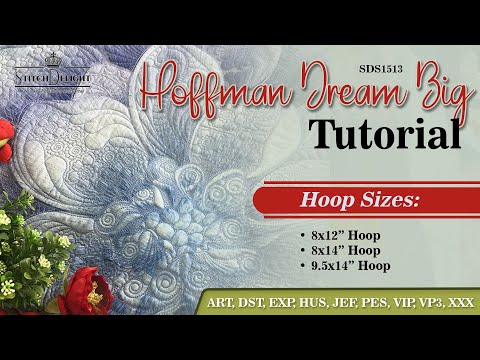The bobbin is a critical component for the proper functioning of a sewing or embroidery machine and is considered one of the most essential items. While your machine is equipped with plastic or metal bobbins, it can be advantageous to consider exploring pre-wound bobbins. This option provides a significant time-saving advantage and allows for extended operating time before requiring a refill of bobbin thread.

Lets first explore pre-wound bobbins and will then follow that up with different types of thread for the bobbin area.
For pre-wounds there are typically 3 types :
Plastic-sided bobbins: These bobbins have a plastic core and are typically more durable and long-lasting compared to cardboard-sided bobbins. The plastic sides provide stability and support to the bobbin, which helps maintain consistent tension during embroidery. Plastic-sided bobbins are ideal for high-speed embroidery machines and dense designs that require increased tension control. They can withstand the rigors of embroidery without deforming or warping.
 Cardboard-sided bobbins: These bobbins have a cardboard core, and while they are generally less durable than plastic-sided bobbins, they are still commonly used in embroidery. Cardboard-sided bobbins are suitable for most standard embroidery projects and are cost-effective. They work well with mid-range embroidery machines and designs that don't require excessive tension control.
Cardboard-sided bobbins: These bobbins have a cardboard core, and while they are generally less durable than plastic-sided bobbins, they are still commonly used in embroidery. Cardboard-sided bobbins are suitable for most standard embroidery projects and are cost-effective. They work well with mid-range embroidery machines and designs that don't require excessive tension control.
Sideless bobbins: Sideless bobbins, also known as coreless or magnet-core bobbins, lack the plastic or cardboard sides. They consist only of the thread wound around the bobbin core. Sideless bobbins are often used in specialty or industrial embroidery machines that have specific bobbin holders designed for this type of bobbin. These bobbins allow for better thread delivery at high speeds and are typically used in professional settings.

It's worth mentioning that some embroidery machines are designed to work with specific types of bobbins, so you should consult your machine's manual or manufacturer's recommendations to ensure compatibility. Additionally, always consider the recommendations of your thread and machine manufacturers regarding the use of bobbin thread for optimal embroidery results.
Now lets look at different thread types - Bobbin thread often comes in large cones like this image below :

Polyester bobbin thread: This is the most commonly used bobbin thread for machine embroidery. It is a strong and durable thread that is resistant to shrinking and fading. It is often available in different thicknesses such as 60wt or 90wt. - 60wt being thicker than 90wt and the thinner the thread the more detail you will obtain. When a design is very dense, often switching to a thinner top and bottom thread solves your problem for a softer design.
Cotton bobbin thread: Cotton thread is widely used for embroidery, but it is less commonly used as a bobbin thread. It is softer and more absorbent than polyester, which makes it good for certain projects where a softer feel is required. Cotton thread tend to leave a lot of fluff in the bobbin area and can cause problems during stitching, so its recommended to rather use polyester thread in the bobbin area
Rayon bobbin thread: Rayon thread is a shiny and strong thread that is similar to silk. It is ideal for machine embroidery projects that require a high-end finish. It is available in different thicknesses, such as 50wt or 80wt.
If we look at different types of machine embroidery, we can sometimes break the usual rule and wind other types of thread onto the bobbin for various effects. Not that sometimes tension need to be adjusted, depending on what you put in the bobbin area.
When doing freestanding lace for example, we will often wound the same thread you use in the top as in the bobbin, match the colour, so using a rayon thread at the top and the same weight and type in the bobbin, this creates a reversible look and gorgeous even color lace.
When stitching onto sheer fabrics like, food nets or making embroidered veils, same rule applies, using the same bobbin thread your item looks great on both sides of the hoop.
Sometimes you will stitch a pre made quilt or a towel and the customer don't want to see the back of the embroidery, you can then either apply a patch onto the back OR match your bobbin thread, so the picture are colored on both sides of the hoop making it more visually appealing.
When winding your own bobbins, always make sure you wind it evenly and with the correct tension, often thread breaks or even needle breaks are because of a poorly wound bobbin. So make sure your tension disks are clean and fluff free before trying to wound up a empty bobbin.
What if my machine does not wind bobbins properly OR I need to stop the machine while I wind a bobbin OR I don't have a bobbin winder at all. You can get a bobbin winder easily from most embroidery supply shops or machine manufacturers. Its a very handy machine to have, not that expensive and can wind a wide variety of spools, no matter if its plastic, metal or the size of the hole. You get a large bobbin, called a M-Size which typically is used by Long arm Quilt machines or industrial sewing machines, and even these bobbins can be wound up using this nifty machine. - You can purchase HERE for under $40

Now as this blog is about organizing, lets see how do we store these bobbins. If you are like me, I probably have a bobbin for each color of thread and then about 20 that is wound with white and 10 with black, permanently ready for use.
Bobbin Cases like these are handy to store the bobbins so they don't tangle


If you have your bobbins in a small drawer you won't want them to unravel, so these clips are a true life saver - they easily clip over a bobbin, preventing them from unravelling.
Bobbin wheels are a great way of storing as well and will also prevent the bobbin from unwinding
By now you will have so many items in your sewing space organized and can probably already see the light at the end of the tunnel.
In the next installment, we will discuss pins, wonder clips and other temporary holding clips you might need, specifically with in the hoop projects in mind, so stay tuned !













4 commentaires
Sue Bierly
Thank you for the helpful information on all posts.
Van Roosbroeck Jeannine
Zeer leerrijk dank u
Diana Stansell
Very informative article. Thank you for posting it.
Connie Connors
Thank you for taking the time to explain so many things to us. It’s very kind of you.